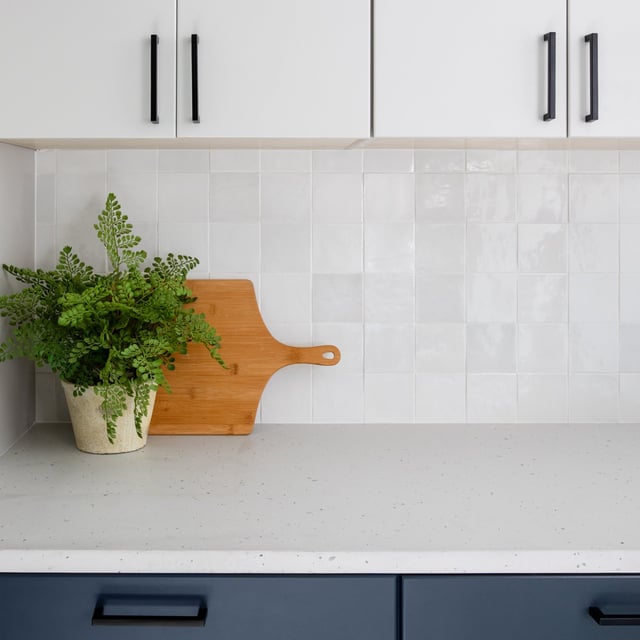
Design
The Ultimate Guide to Kitchen Tiles with Tile Options
04.01.2025
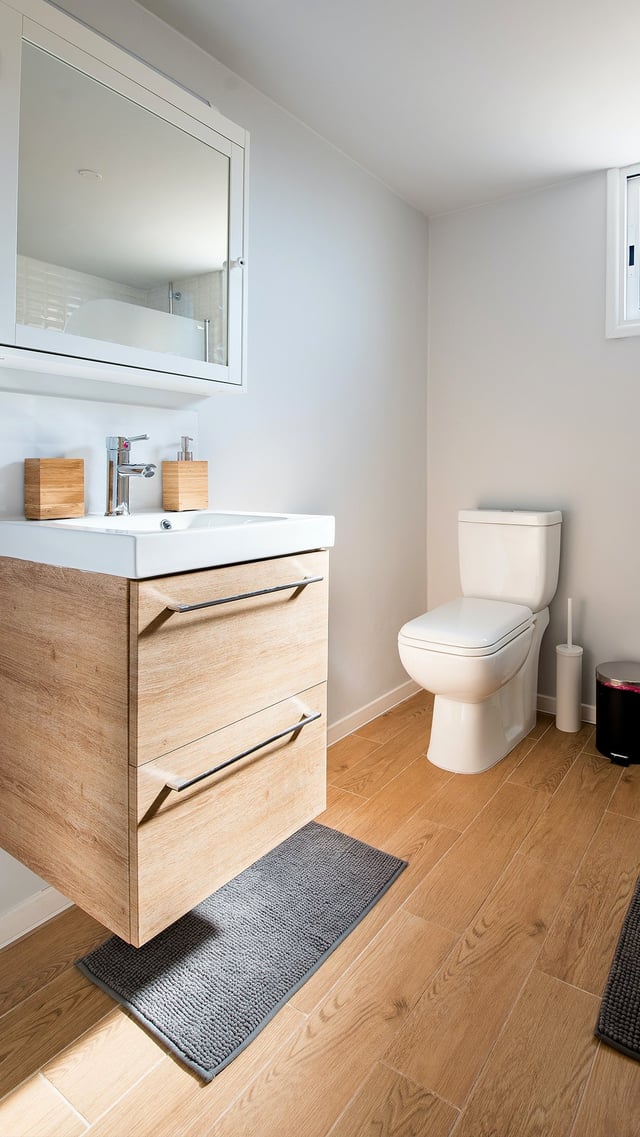
In This Article
Have you ever thought about having wood flooring in the bathroom? It's becoming more popular because it adds a touch of natural beauty and warmth. However, putting wood in a place with lots of moisture can be tricky.
This bathroom wood flooring guide is here to help you find the perfect balance between looks and practicality. Get ready to learn how to make your bathroom both stylish and functional!
Choosing wood flooring for your bathroom can be exciting yet requires careful thought. While it offers a unique aesthetic and can transform your space, it also comes with challenges, especially in high-moisture areas. Understanding the pros and cons will help you decide if wood flooring is the right choice for your bathroom renovation.
When considering wood flooring for your bathroom, it's crucial to choose types that balance beauty with practicality. Not all wood is suitable for high-moisture areas, so knowing your options can help make the best decision. In this guide, we'll explore the best wood flooring options for bathrooms, ensuring you get the durability and style you desire.
Engineered wood flooring is crafted with multiple layers of wood, bonded together in a crisscross structure. This construction technique not only enhances its stability but also makes it more resistant to changes caused by humidity and temperature. As a result, engineered wood is less likely to expand or contract, making it a durable choice for bathroom settings.
In addition to its superior construction, engineered wood offers water-resistant properties that are crucial for bathroom use. A strong finish layer protects the surface, helping to prevent water from seeping in and causing damage. This makes engineered wood a practical option for those wanting the warmth and beauty of wood flooring without worrying about moisture-related issues.
Solid hardwood flooring in bathrooms can be a stunning choice, provided it's properly sealed to combat moisture. Certain wood species, like teak and cedar, are naturally more water-resistant, making them some of the best wood flooring options for bathrooms. These woods, when sealed effectively, not only add elegance but also stand up better to the bathroom's humid conditions.
However, maintaining solid hardwood in a bathroom requires commitment. Regular resealing is essential to protect the wood from moisture intrusion and to keep it in pristine condition. By consistently addressing spills and keeping up with maintenance, you can ensure your bathroom's wood flooring remains both beautiful and functional.
Wood-look tiles are becoming a popular alternative for bathroom flooring due to their blend of style and practicality. These tiles mimic the appearance of real wood, offering the warmth and charm of wood flooring while being highly resistant to moisture. This makes them an ideal choice for those who want the look of wood without the worry of water damage in a high-moisture bathroom environment.
Moreover, wood-look tiles can be creatively paired with natural wood elements to enhance the overall aesthetic of the bathroom. By combining tiles with wood accents such as cabinetry or trim, you can achieve a cohesive and harmonious design. This approach allows homeowners to enjoy the beauty of wood while ensuring durability and easy maintenance, making it a versatile option in any bathroom.

Before installing wood flooring in your bathroom, assessing moisture levels is an essential step. This evaluation helps prevent future water damage and ensures the longevity of your floors. Knowing the moisture content allows you to take the right precautions, such as selecting the best wood flooring options for bathrooms that can withstand humid conditions.
Subfloor preparation is another critical aspect of the installation process. A clean and even subfloor provides a sturdy foundation, while incorporating waterproofing essentials and vapor barriers protects against moisture infiltration. Choosing the right underlayment is equally important, as it not only adds a layer of defense against moisture but also enhances comfort and reduces noise underfoot.
Best Installation Methods (Glue-Down vs. Floating)
When it comes to bathroom wood flooring installation, choosing the right method is crucial. The glue-down method involves adhering the wood directly to the subfloor, offering a stable and durable flooring solution. However, it can be more challenging to remove if repairs are needed. On the other hand, the floating method allows the flooring to "float" above the subfloor, making installation easier and providing some flexibility for expansion and contraction.
Proper Spacing and Expansion Gaps
Ensuring proper spacing and expansion gaps is vital for the longevity of your wood flooring. These gaps allow the floor to expand and contract with changes in temperature and humidity, preventing buckling and warping. It's recommended to leave a small gap between the flooring and walls, covered by trim or baseboards. Using spacers during installation can help maintain consistent gaps and ensure the flooring remains secure.
Ensuring Watertight Seams
To protect your wood flooring from moisture, ensuring watertight seams is a must. This involves sealing the joints between planks to prevent water from seeping underneath the flooring. Using a high-quality wood sealant or adhesive can effectively waterproof these seams. Regularly checking and maintaining the seals is also important to prevent moisture-related issues in the future.
Cleaning Techniques to Prevent Moisture Buildup
Regular cleaning is essential to prevent moisture buildup on wood flooring in bathrooms. Using a microfiber mop or cloth helps absorb any excess water, keeping the surface dry. It's important to avoid soaking the floors and instead use a damp mop for a gentle clean. This practice helps maintain the wood's integrity and prevents damage from moisture seepage.
Regular Sealing and Refinishing
To keep your bathroom wood flooring looking its best, regular sealing and refinishing are necessary. Sealing provides an extra layer of protection against moisture and wear, while refinishing restores the floor’s original shine and luster. Depending on the type of wood and usage, it's advisable to reseal and refinish every few years to maintain the floor's durability and appearance.
Dealing with Spills and Leaks
Immediate attention to spills and leaks is crucial in protecting your wood floors. Quickly wiping up any spills prevents water from seeping into the seams and causing damage. For leaks, addressing the source and ensuring proper clean-up can help mitigate potential issues. Keeping absorbent mats in key areas, like near sinks and tubs, can also help protect the flooring.
Preventing Mold and Mildew Growth
Mold and mildew thrive in moist environments, so it's essential to prevent their growth on your wood flooring. Ensuring proper ventilation in the bathroom helps reduce humidity levels, making the space less hospitable to mold. Regular cleaning with mold-inhibiting solutions can further protect the wood. By maintaining a clean and dry bathroom environment, you can effectively prevent mold and mildew on your wood floors.
Pairing Wood Flooring with Neutral Color Schemes
Wood flooring pairs beautifully with neutral color schemes, creating a serene and cohesive look in your bathroom. Soft whites, grays, and beiges complement the natural warmth of the wood, enhancing the calming atmosphere. This combination allows the texture of the wood to stand out, adding depth and elegance to the space. Neutral palettes also provide a versatile backdrop, making it easy to update accessories and decor over time.
Using Wood to Create Contrast with Tiles
Employing wood to contrast with tiles can add visual interest and stylish flair to your bathroom. While tiles are often cool and sleek, wood introduces warmth and texture, creating a balanced and dynamic environment. By strategically placing wood flooring against tiled walls or countertops, you can highlight the unique characteristics of each material. This design choice can also define spaces within the bathroom, such as separate showers and vanity areas.
Choosing the Right Finish (Matte, Gloss, or Distressed)
Selecting the appropriate finish for your wood floors is key to achieving your desired aesthetic. A matte finish provides a natural and understated look, perfect for a minimalist or rustic theme. Gloss finishes, on the other hand, add a touch of elegance and can make your bathroom appear more polished and modern. Distressed finishes offer a charming, aged appearance that works well in vintage or cottage-style decor. Each finish option has its own appeal and can be matched to your personal style.
Incorporating Wood Trims and Accents
Incorporating wood trims and accents is a great way to reinforce the theme and add cohesiveness to your bathroom design. Wooden trims around mirrors, windows, or doors can tie in with the flooring, creating a unified look. Accents like wooden shelves or cabinets further enhance the natural warmth and character of the space. These elements not only contribute to the design but also provide functional benefits, enhancing the overall experience in your bathroom.
Wood-Look Porcelain Tiles
Wood-look porcelain tiles are a fantastic alternative for achieving a wood-like aesthetic in your bathroom. These tiles are designed to mimic the appearance of real wood while offering excellent durability and water resistance. Perfect for a waterproof wood flooring bathroom solution, they allow you to enjoy the charm of wood without the maintenance concerns typically associated with it. Moreover, porcelain tiles are available in various finishes and patterns, making them a versatile choice for any bathroom design.
Waterproof Laminate Flooring
Waterproof laminate flooring is another excellent option for those seeking the beauty of wood without the worry of water damage. This type of flooring combines a wood-like appearance with the durability needed for high-moisture areas like the bathroom. Its layered construction provides resistance to moisture, while realistic wood textures enhance the flooring's authentic look. Laminate flooring offers an economical choice without sacrificing the desired wood aesthetic.
Vinyl Flooring with Wood Textures
Vinyl flooring with wood textures is a popular choice for homeowners looking for budget-friendly alternatives to natural wood. This type of flooring is not only affordable but also highly water-resistant, making it suitable for bathroom environments. Advances in technology have allowed vinyl flooring to closely replicate the look and feel of real wood, providing a practical and stylish solution. Easy to install and maintain, vinyl flooring is a smart option for achieving a wood-inspired look in your bathroom.
When considering wood flooring installation in bathrooms, understanding the average cost is essential for effective budgeting. Typically, the cost of wood flooring materials and installation can vary significantly based on the type of wood chosen and the complexity of the project. While wood flooring offers a luxurious aesthetic, it's important to remember that initial expenses can be higher than alternative materials. For those mindful of costs, exploring options like engineered wood for bathroom floors can provide a balance of beauty and budget-friendly pricing.
Beyond the initial installation, it's crucial to factor in maintenance costs over time. Wood flooring in bathrooms requires ongoing care, such as sealing and refinishing, to keep it looking its best and to protect it from moisture damage. These maintenance expenses can add up, so it's wise to plan accordingly in your long-term budget. For homeowners seeking more economical solutions, alternatives such as vinyl flooring with wood textures offer similar aesthetics with less maintenance, making them a cost-effective choice for bathroom renovations.
In conclusion, installing wood flooring in the bathroom can bring warmth and style, but it requires thoughtful consideration of both aesthetics and functionality. This bathroom wood flooring guide has explored the key points, including the pros and cons, best types, and maintenance tips. Before making a decision, weigh your options and consider budget-friendly alternatives alongside your design goals.
Is it safe to use wood flooring in a bathroom?
What is the best type of wood flooring for high-moisture areas?
How do you waterproof wood flooring in a bathroom?
Can you install heated floors under wood flooring in a bathroom?
What are the long-term maintenance needs of wood bathroom floors?

Calculate the true cost of your bathroom remodel
Get real-time cost estimates for materials and labor, so you can budget your renovation with confidence—no guesswork.

Design
The Ultimate Guide to Kitchen Tiles with Tile Options
04.01.2025

Design
What is a Frameless Glass Shower Screen?
03.25.2025
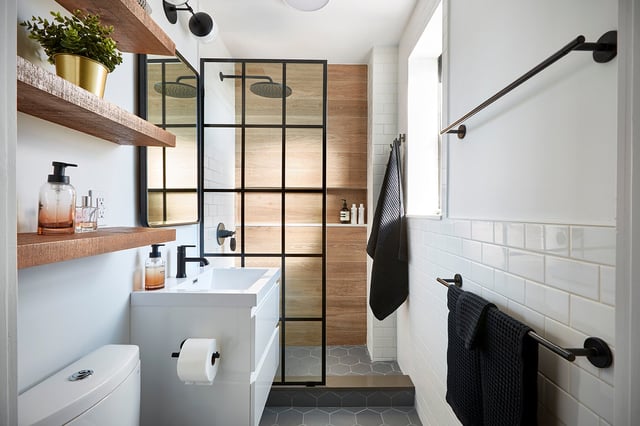
Finance
Ultimate Guide to Chicago Bathroom Financing
03.24.2025
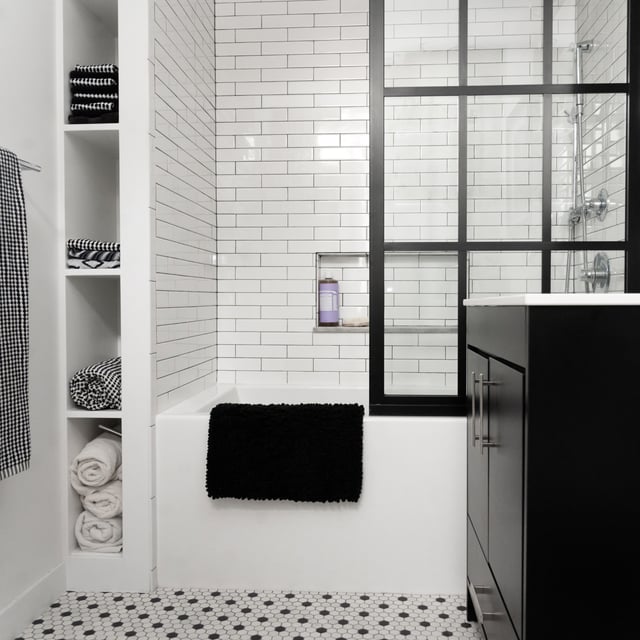
Remodeling
How to Finance a Bathroom Remodel in New Jersey
03.19.2025
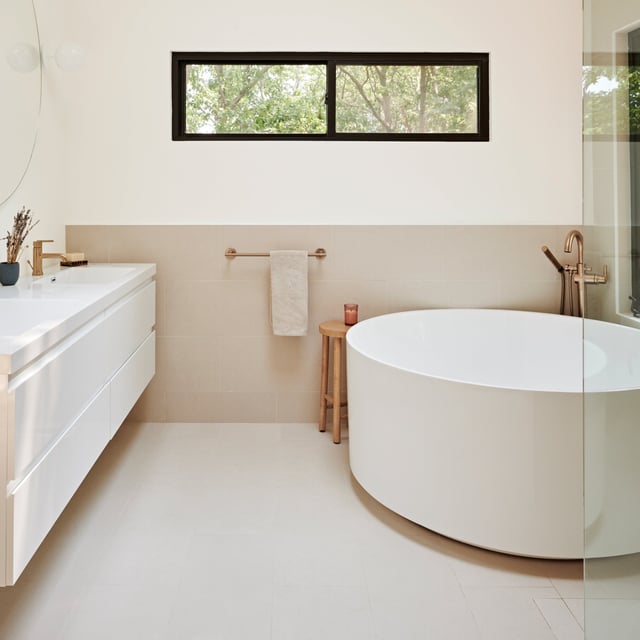
Cost
A Complete Guide to Bathroom Renovation Costs in Fairfield County (2025)
03.19.2025
Renovate confidently